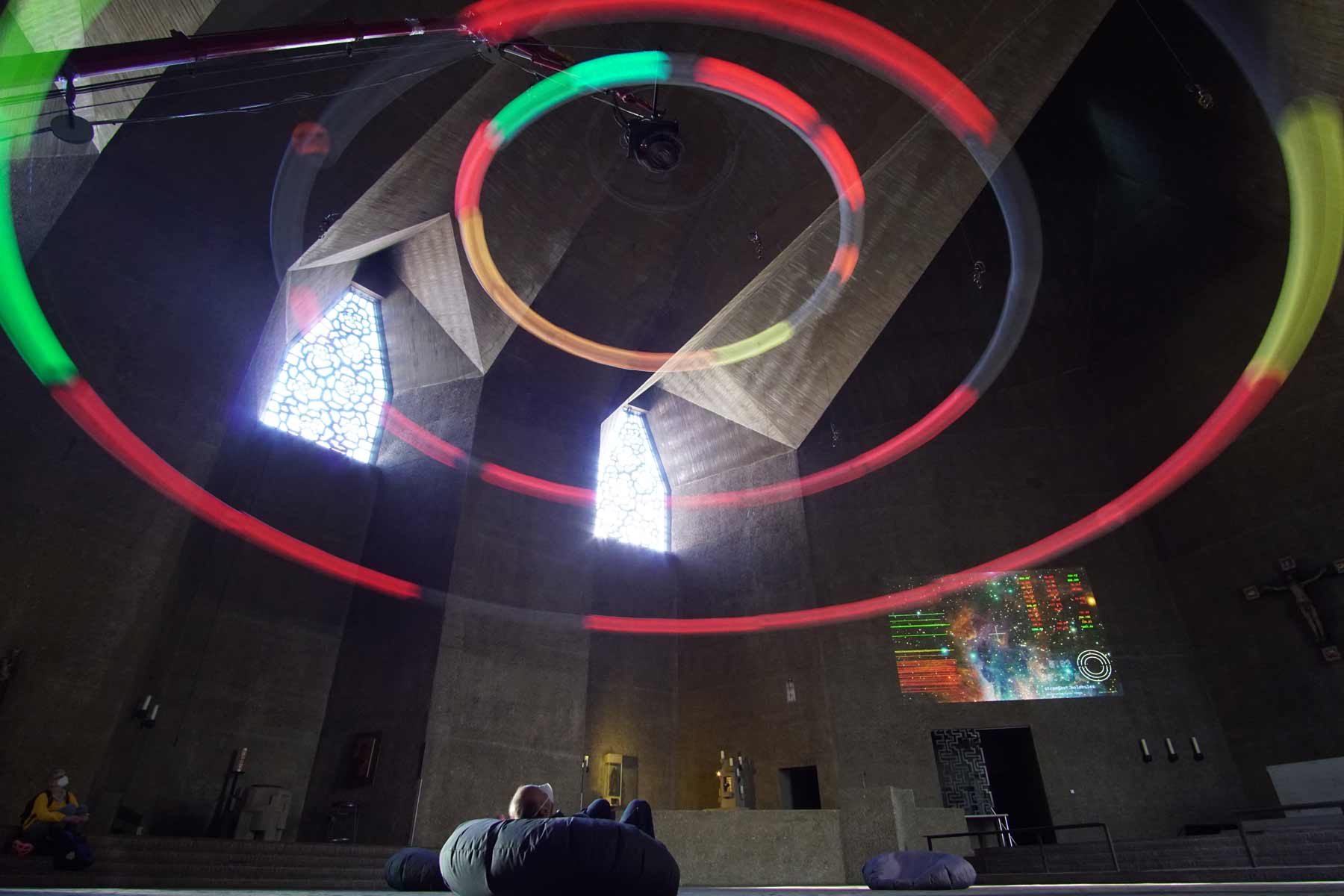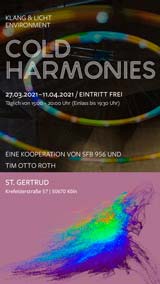

2020, something unique happened in church history: For the first time, the services for the Passion and Death of Christ, as well as the Solemnity of the Resurrection, could not be celebrated together by the congregations in the church hall. This year, too, seats in the services are limited. Outside the services, Cologne's churches are open to visitors, subject to hygiene regulations. In St. Gertrud in Cologne, a very special form of devotion during the Easter season is offered: the Cold Harmonies transform the emanations of stellar nurseries in the Cologne church into a universe of sound and light revolving above the heads of the visitors.
Orion Variations
The work is a conceptual extension of Tim Otto Roth's kinetic light and sound sculpture Heaven's Carousel, which rotates above the audience with 36 luminous sound bodies.
The radiation of gas nebulae, which the DFG-funded Collaborative Research Centre 956 Conditions and Effects of Star Formation at the
Institute of Physics at the University of Cologne works with on a daily basis, is in a sense the score: the audience embarks on an acoustic
flight through the cold dust and gas clouds of the Orion Nebula. The light invisible to our eyes, which the molecules emit at these extremely
low temperatures near zero, determines the instrumentation and score. The long-wave light waves of simple molecules such as carbon monoxide
isotopes, water, ammonia or sulphur dioxide, which are no longer visible to the human eye, have fixed oscillation ratios that Roth composes
analogously to the internal molecular harmonies in audible, constantly recomposing microtonal sound structures - the Cold Harmonies.
The artist transfers the inherent spherical harmonics into an ethereal environment in interaction with the concrete church building
constructed by Gottfried Böhm. Find out more...
From March 27th to April 11th 2021, the Cold Harmonies were on show in St. Gertrud, Cologne.
The Cold Harmonies were created in close collaboration with the astrophysicist Dr. Volker Ossenkopf-Okada. They were realized in the context of the outreach initiative of the research cluster SFB 956 Conditions and Impact of Star Formation (Cologne) and were funded by the Deutsche Forschungsgemeinschaft (DFG).

